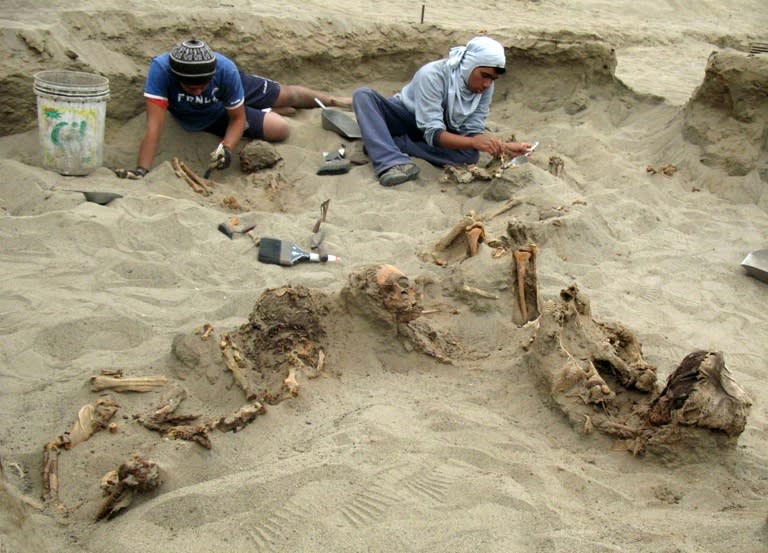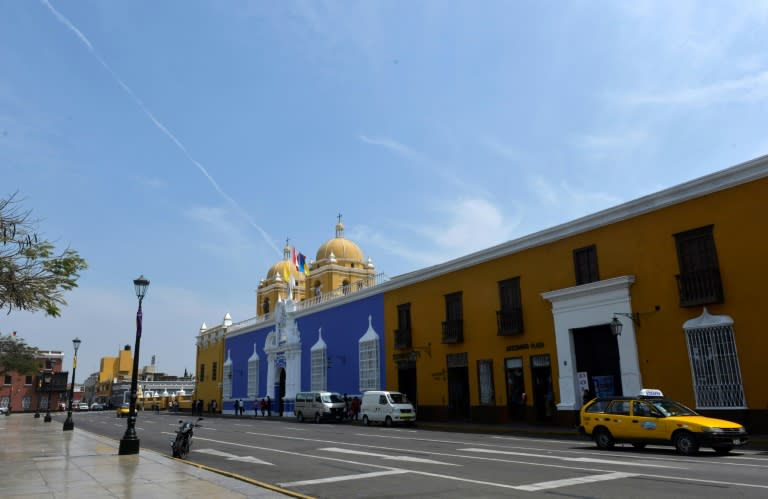Evidence of world's biggest child sacrifice found in Peru
Archaeologists in Peru have found evidence of the biggest-ever sacrifice of children, uncovering the remains of more than 140 youngsters who were slain alongside 200 llamas as part of a ritual offering some 550 years ago, National Geographic announced on Thursday. The site was located on top of a cliff facing the Pacific Ocean in La Libertad, a northern region where the Chimu civilization arose, an ancient pre-Columbian people who worshipped the moon. The cliff is located just outside the northwestern coastal city of Trujillo, Peru's third largest city which today has 800,000 inhabitants. "While incidents of human sacrifice among the Aztec, Maya and Inca have been recorded in colonial-era Spanish chronicles and documented in modern scientific excavations, the discovery of a large-scale child sacrifice event in the little-known pre-Columbian Chimu civilization is unprecedented in the Americas -- if not in the entire world," National Geographic said. The investigations were carried out by an international team led by National Geographic's Peruvian explorer Gabriel Prieto, of the National University of Trujillo, and John Verano, a physical anthropologist from Tulane University in New Orleans. The team uncovered evidence of "the largest single incident of mass child sacrifice in the Americas -- and likely in world history." "I, for one, never expected it," Verano told the magazine of the sacrifice site, known to the researchers as "Las Llamas." "And I don't think anyone else would have, either," he added. The excavations began in 2011 when the team uncovered the remains of 42 children and 76 llamas at a 3,500-year-old temple nearby. By the time the excavations had finished five years later, they had uncovered more than 140 sets of child remains and 200 juvenile llamas, as well as rope and textiles dating to between 1400 and 1450. Located about 300 meters above sea level, the site is in the middle of a cluster of residential compounds in Huanchaco, a neighborhood bordering Trujillo. - Hearts removed? - "The skeletal remains of both children and animals show evidence of cuts to the sternum as well as rib dislocations, which suggest that the victims' chests were cut open and pulled apart, perhaps to facilitate the removal of the heart," the magazine said. Researchers determined that the children were between the ages of five and 14, although most were between eight and 12 when they died, with their bodies buried facing west -- out to sea. The llamas were all less than 18 months and they were buried facing east, toward the Andes, they said. "It is ritual killing, and it's very systematic," Verano said. The Chimu civilization extended along the Peruvian coast to where Ecuador begins, with its empire brought down by the Incas in around 1475, just a few decades after the sacrifice at Las Llamas. "Until now, the largest mass child sacrifice event for which we have physical evidence is the ritual murder and interment of 42 children at Templo Mayor in the Aztec capital of Tenochtitlan," National Geographic said, referring to what is modern-day Mexico City.



